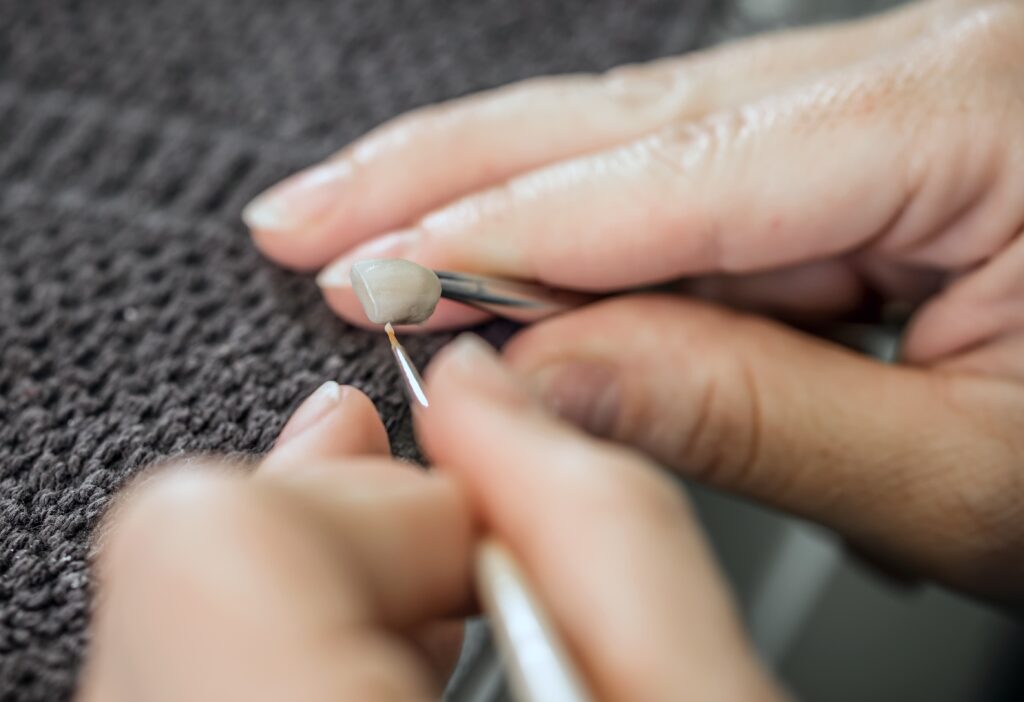


Composite fillings are a mixture of glass or quartz filler in a resin medium that produces a tooth-colored filling. They are sometimes referred to as composites or filled resins, or also referred to as “white fillings”. Composite fillings provide good durability and resistance to fracture in small-to-mid size restorations that need to withstand moderate chewing pressure.
Less tooth structure is removed when the dentist prepares the tooth, and this may result in a smaller filling than that of an amalgam. Composites can also be “bonded” or adhesively held in a cavity, often allowing the dentist to make a more conservative repair to the tooth.The cost is moderate and depends on the size of the filling and the technique used by the dentist to place it in the prepared tooth. It generally takes longer to place a composite filling than what is required for an amalgam filling. Composite fillings require a cavity that can be kept clean and dry during filling and they are subject to stain and discoloration over time.

The pulp, or soft inner tissue is important during the tooth’s development. Once a tooth is fully mature, the tooth can survive without the pulp because the tooth is nourished by tissues surrounding it. The pulp is normally surrounded and protected by a layer of dentin. Above the gumline, the dentin is protected by a layer of enamel; below the gum-line the dentin is covered by cementum.
When a crack or cavity destroys these protective layers, the pulp is exposed to irritants and bacteria in your mouth. This can result in inflammation then infection, and, eventually, an abscess. Periodontal (gum) disease or a severe blow to the tooth can also damage the pulp. Endodontic therapy removes the damaged pulp and usually the tooth returns to a healthy condition. If an abscess was present before treatment the healing process may take up to 2 years.

Crowns and caps are used interchangeably as dental restorations. They are synthetic caps, often made of porcelain, placed on top of a tooth to restore its function and appearance after a root canal or extensive decay. Crowns can also be used to attach bridges, cover implants, or protect cracked teeth and discolored teeth.
The procedure involves reducing the tooth size, taking an impression, and manufacturing a custom-designed crown at a lab. Crowns are not the same as veneers, as veneers are applied to smaller areas. With proper care, crowns can last for many years, and it is essential to floss around the crown to maintain oral health.
